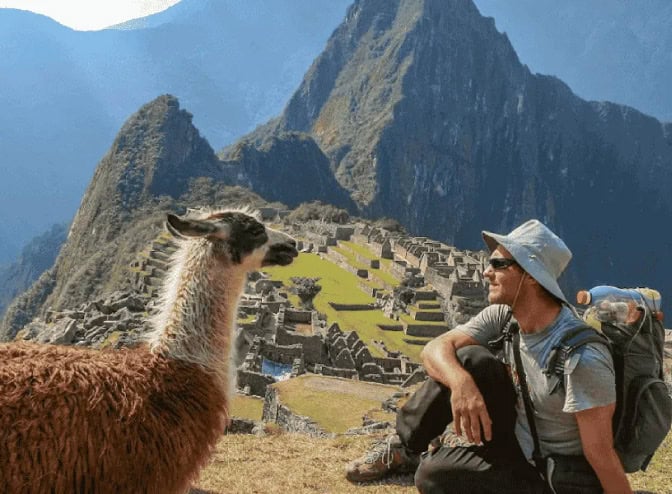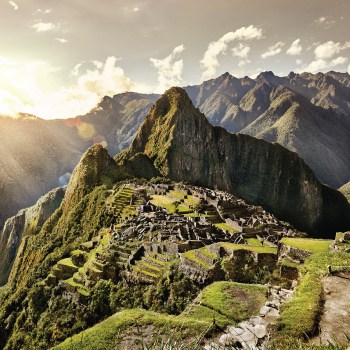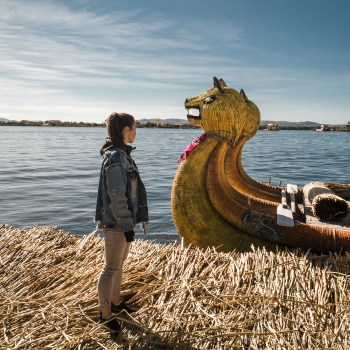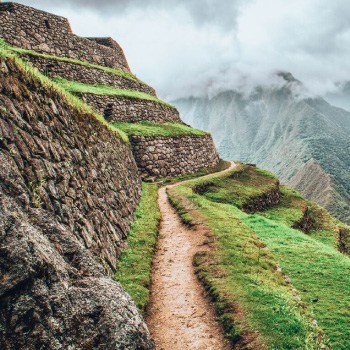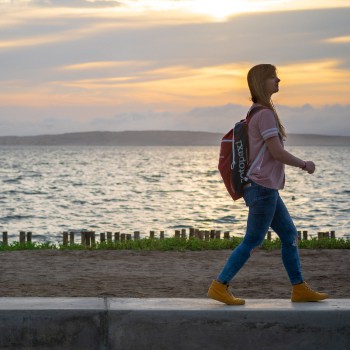The MAP museum (Museo del Arto Pre-Colombino) is in the beautiful square of Plaza Nazarenas, in Cusco. The museum is housed in what was originally the Inca ceremonial court from 1450AD. The building then became the mansion of conqueror Alonso Diaz in 1580. And then in 1850 was home to Earl of Cabrera. In June 2003 the beautiful building was restored and came to be the Pre-Columbian Art Museum of Cusco. The MAP museum holds a collection of masterpieces that date as far back as 1250 BC. It showcases many great artefacts from before the invasion of the Spanish. The selection of objects on display were chosen by the museums curators Fernando de Szyszlo and Cecelis Bakula and came from the Larco Museum in Lima.
The MAP museum is well designed and well laid out. There are 11 showrooms inside the museum and are easily navigable. All of the exhibitions have excellent explanations in Spanish, English and French text to accompany them. The museum is very modern. It is crisp and spotless clean.
The Galleries
On the ground floor of the MAP museum the first rooms you will enter are the Silver Room, The Gold Room and the Seashells room. Each of these rooms is attractively laid out for visitors to work their way through. Intricately designed objects such as golden nose ornaments and ear plug ornaments worn by important elders are on display. Stunning pieces of jewelry like bracelets and necklaces, that would be popular today, are to be seen. Amazingly crafted breast plates are on show, some made from gold, silver and other complicated designs made from striking seashells. The formative gallery is also on the ground floor and offers the visitor an insight into the remarkable ceramic artwork from the diverse cultures that were located along the coast.
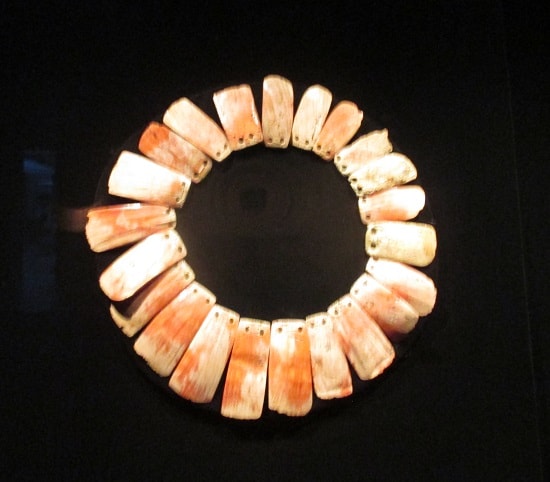
A Breastplate Made from Seashells on Display at the MAP Museum
Before you make your way to upstairs of the MAP museum there is a small wood gallery. Man has used wood for thousands of years for tools as well as day to day use. In this gallery you will see figurines, from 13th century, carved from wood. Ceremonial staffs created with great workmanship are on display. These staffs were used by people with rank and represented hierarchy within groups. Benches and stools dating back to the imperial period are also to be seen.
There is a nice display of handcrafted wooden pieces on the walls on the way up the stairs and some interesting quotes from famous Peruvian artists and writers. There are a number of galleries upstairs in the MAP museum displaying pieces from different parts of Peru. The galleries are named according to the community that created the pieces. The Nasca gallery, Mochica gallery, Huari gallery, Chancay gallery and Inca gallery are on the upper floor. The Nasca period represents the rise of painting and the evolution of new techniques used by artists. There are many colourful pieces to be seen and appreciated in this room. The Mochica people were the greatest sculptors of Pre Columbian Peru. Their ceramics and sculptures clearly depict feeling and actions. Their pictorial work on vessels, plates, cups and bowls is delicate and intricate and beautiful to see.
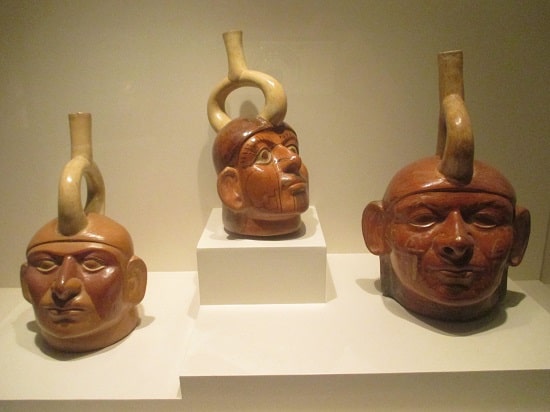
Handcrafted Water Vessels from the Mochica period
The Huari introduced geometric designs and mixed many other styles of sculpture and painting together. This is also known as the transitional period and fell between 800-1300 AD. The Chancay period took place after the liberation from Huari dominance. The Chancay were a military people but were clearly capable of expressing their artistic freedom. Ceramics are simple but yet elegant with attractive designs. The last gallery to visit is the Inca gallery. The visitor will witness the great ability of the Incas to work with wood, stone, ceramics. Their creative genius can be seen in their sophisticated designs and stylish patterns. Everything is finished to a high standard. The Incas have left displays of these wonderful techniques throughout Cusco, still visible today. The gallery is home to objects found throughout the Inca empire of Tahuantinsuyo.
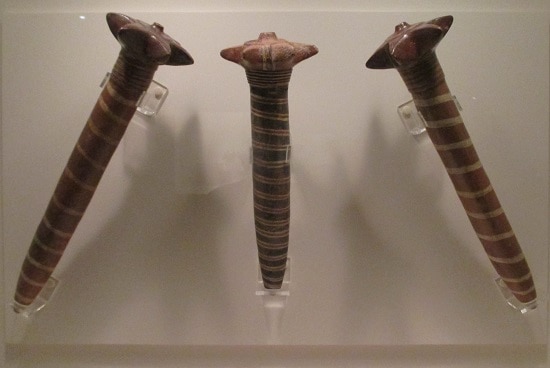
War Clubs on Display in the Inca Room
The MAP museum also has its own café on site. The MAP café offers high end food and lavish deserts and sits in the patio of the museum. The museum also houses the Centro de Textiles Tradicionales del Cusco, where you can buy handmade and designed clothing and materials. There is some construction taking place on the upper floor of the museum. Two or three rooms are under renovation in the hope of expanding the museum even further.
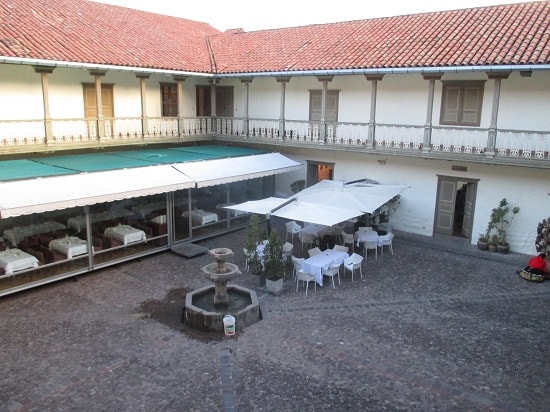
The MAP Cafe, in the Patio Area
Author’s Thoughts
The MAP museum is one of the finest museums in Cusco. It is attractive and appealing to visitors. It is very clear that a lot of thought and consideration went into the creation of the museum. As you move from one room to the next the lights in that gallery turn on, conserving energy but also giving the visitor a sense of anticipation. Every gallery is beautifully kept and preserved. If you plan to visit a museum while in Cusco the MAP museum should be top of your list. The location of the MAP museum is also top class, in Plaza Nazarenas, one of Cusco’s prettiest squares. The MAP museum is not included on the Cusco Tourist Ticket as it is privately owned. This is very evident in comparison to the government run museums. This museum is ahead of the rest.
Location
Plaza Nazarenas, 231, Cusco.
Follow Cuesta del Almirante, the small road to the left hand side of the Cathedral. Or take Triunfo, to the right hand side of the Cathedral and turn left onto Calle Palacio. Both ways will take you Plaza Nazarenas.
Entrance
General admission is S/20 and S/10 for students
Open everyday from 9am to 10pm

